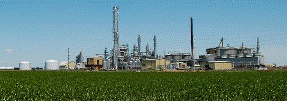Agricultural and Biological Systems Engineering, Department of

Adam Liska Papers
Document Type
Article
Date of this Version
7-2017
Citation
Environment, 59:4 (July/August 2017), pp. 22-33.
WWW.ENVIRONMENTMAGAZINE.ORG
Abstract
Many people tend to think that the outcome of any nuclear weapons use today will result in an escalatory situation with apocalyptic outcomes for the countries involved. Yet many factors are increasing the probability of the limited use of nuclear weapons (e.g., 1 to 20 warheads) in a range of conflict scenarios. Previous atmospheric model simulations of regional nuclear conflicts employing many relatively small bombs have been estimated to cause a global “nuclear autumn,” with great reductions in agricultural productivity, stratospheric ozone loss, and spread of hazardous radioactive fallout. The totality of these effects would result in widespread damage to human well-being and to terrestrial and aquatic ecosystems. In this article, we estimate minimum thresholds for the prevalent types of currently deployed nuclear weapons that would cause equivalent climate impacts, and provide a discussion of the factors that may influence the probability of nuclear weapons use, current risk perception, and possible mitigation actions.
Due to probabilistic realities, Cambridge physicist Stephen Hawking recently concluded that future use of nuclear weapons is highly probable, perhaps even inevitable, given the passage of enough time. Former U.S. Secretary of Defense William Perry also recently warned, “Today, the danger of some sort of nuclear catastrophe is greater than it was during the Cold War.” Secretary Perry, speaking about the implications of even a limited nuclear exchange, said, “The political, economic and social consequences are beyond what people understand.” Two other former U.S. Secretaries of Defense, Robert McNamara and Graham Allison, and numerous nuclear weapons specialists have also suggested that future use is probable.
In previous regional nuclear war simulations, roughly 100 nuclear explosions with 15-KT (kilotons) TNT yields were estimated to ignite 1,300 square kilometers of urban and other devel oped land area.6 The resulting oxidation of carbonaceous materials (e.g., soils, biomass, fossil fuels, asphalt, plastics) was estimated to disperse >5 million metric tons (5 Tg C) of black carbon smoke particles into the stratosphere. Most previous nuclear explosions have not produced significant black carbon emissions because they occurred in the U.S. Southwest desert, on small tropical islands, at high altitudes, or underground.
As a consequence of 5 Tg of black carbon being lofted into the stratosphere, solar radiation on land, atmospheric surface temperature, and rainfall would decrease globally and would likely result in a dramatic decrease in global agricultural production. Agricultural growing seasons could be reduced by 10 to 40 days per year for at least 5 years; global temperatures could be below normal for as long as 25 years; and immediate short-term temperatures could be colder than have occurred in the last 1,000 years. Precipitation could decrease by as much as 20% to 80% in the Asian monsoon region. Large reductions in rainfall would occur in South America and southern Africa, and the American Southwest and Western Australia could be 20% to 60% drier. Climatic changes due to nuclear explosions on developed land could essentially produce a global “nuclear drought,” and the resulting famines could kill up to a billion people from starvation, which would probably most affect those communities that are already in food-insecure environments in the developing world, particularly in Sub-Saharan Africa, South Asia, and the Middle East. Significant changes in precipitation would probably also increase conflict in developing regions, although global temperature reductions may reduce social violence in the United States and other developed countries.
Included in
Bioresource and Agricultural Engineering Commons, Climate Commons, Environmental Health and Protection Commons, Environmental Indicators and Impact Assessment Commons, Environmental Monitoring Commons, Geochemistry Commons, Nuclear Engineering Commons, Other Engineering Commons, Other Environmental Sciences Commons, Other Oceanography and Atmospheric Sciences and Meteorology Commons, Risk Analysis Commons


Comments
Published with license by Taylor & Francis. This is an Open Access article distributed under the terms of the Creative Commons Attribution-NonCommercial- NoDerivatives License